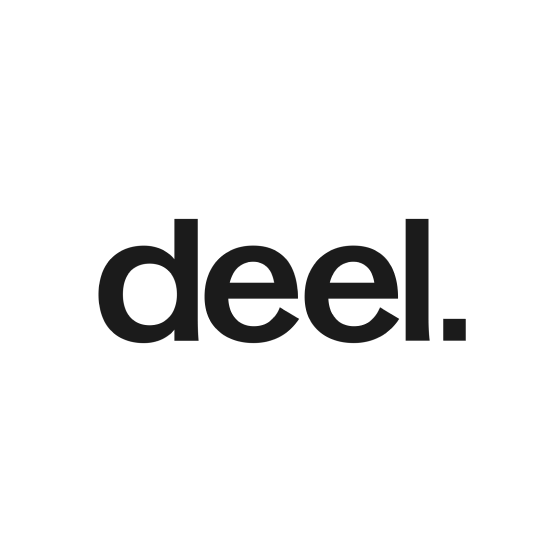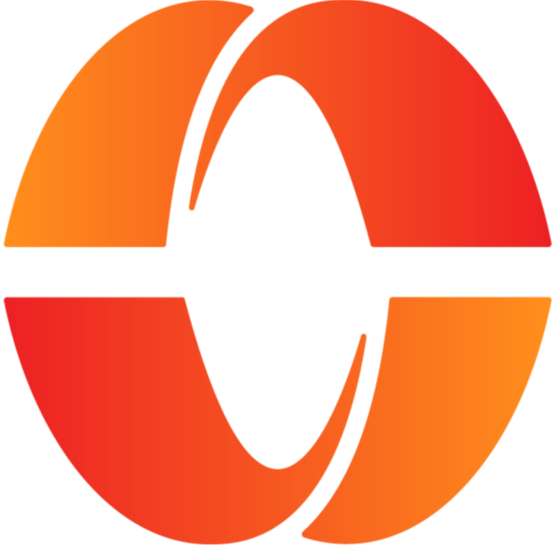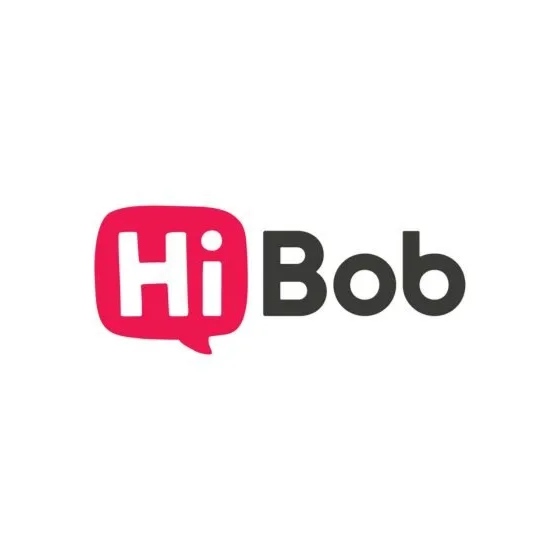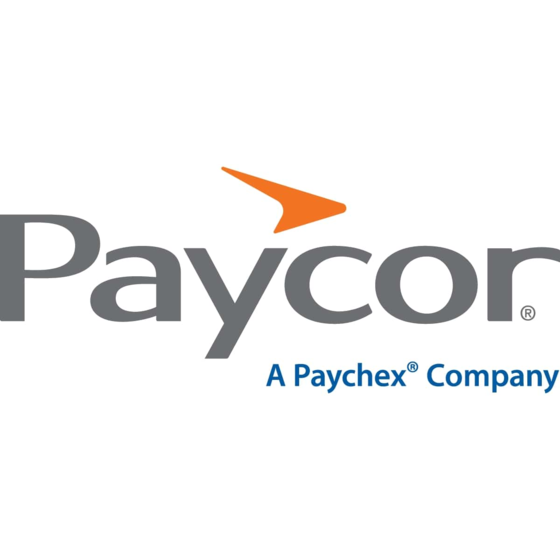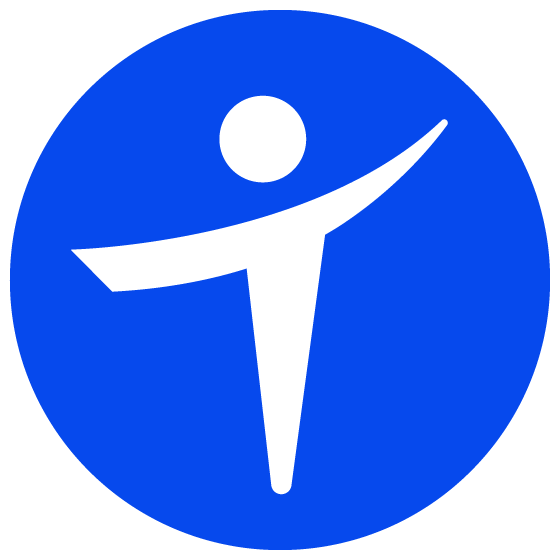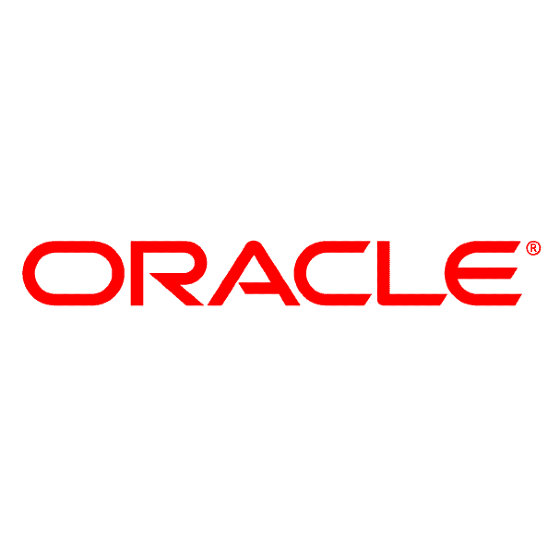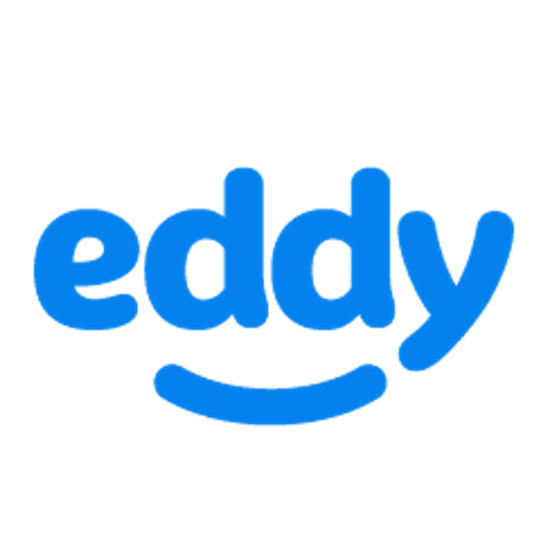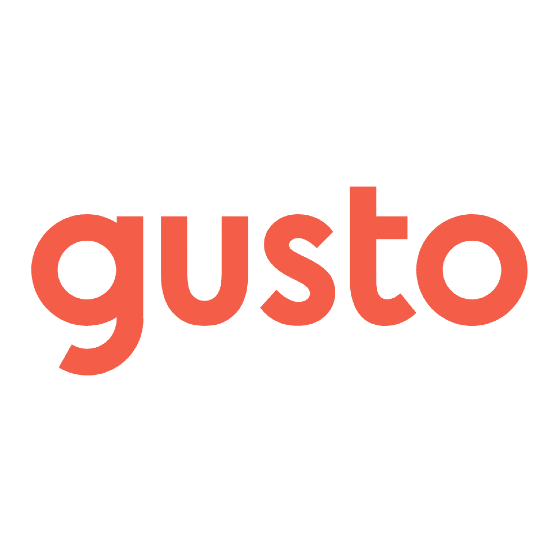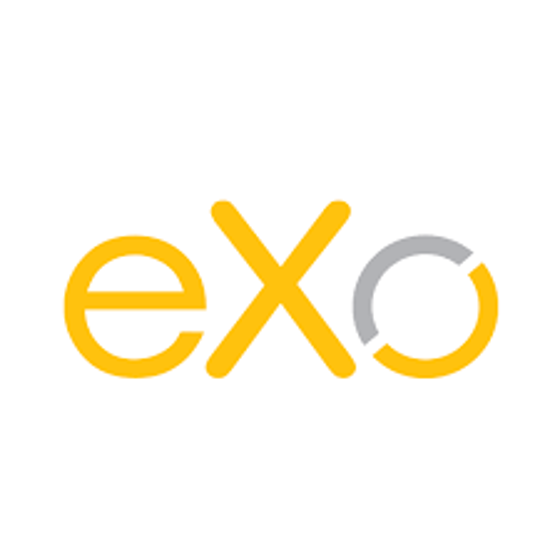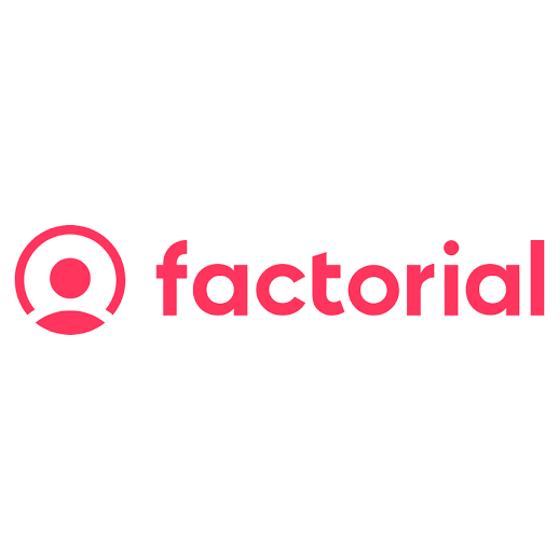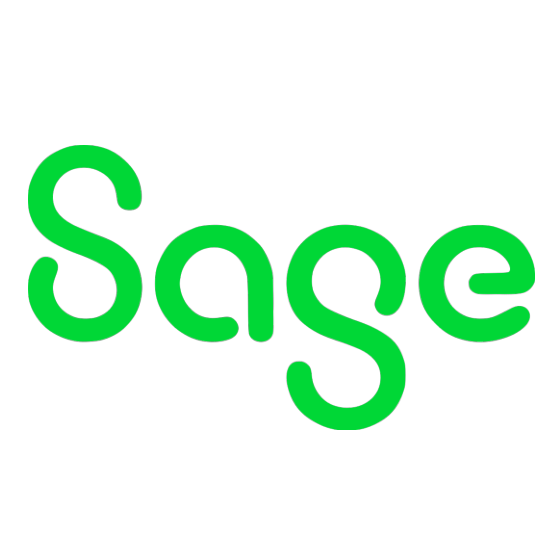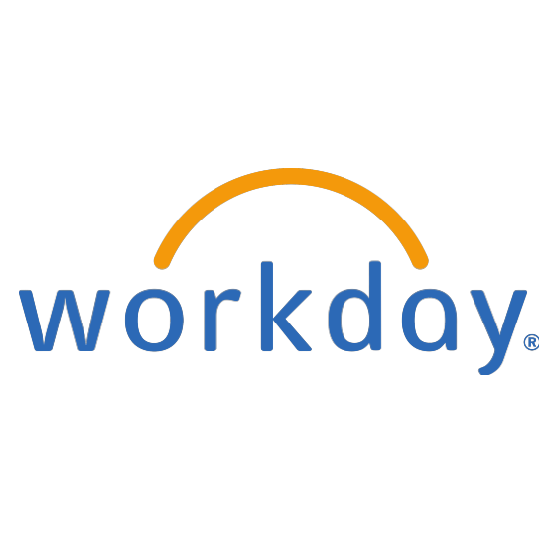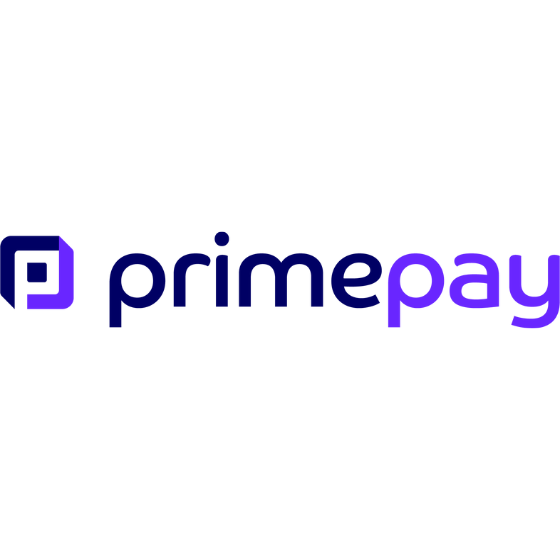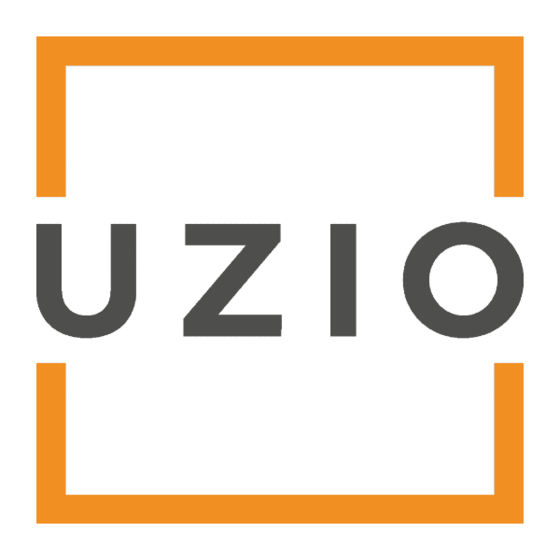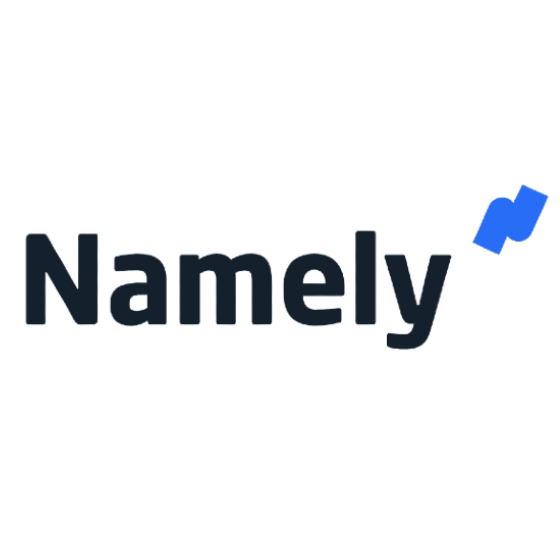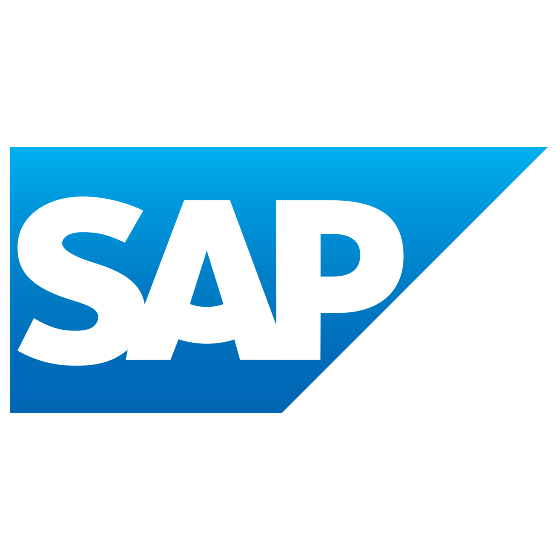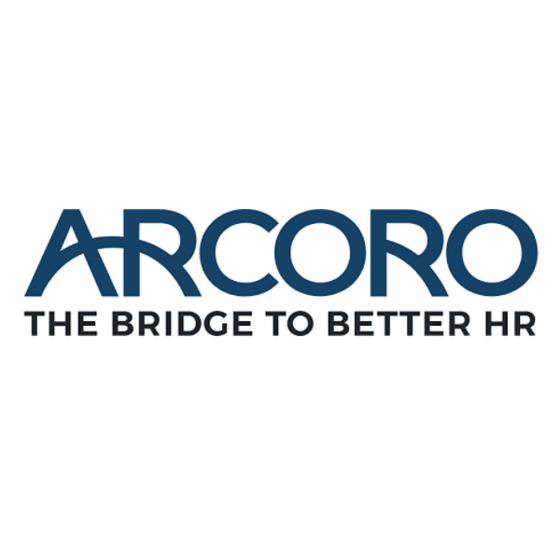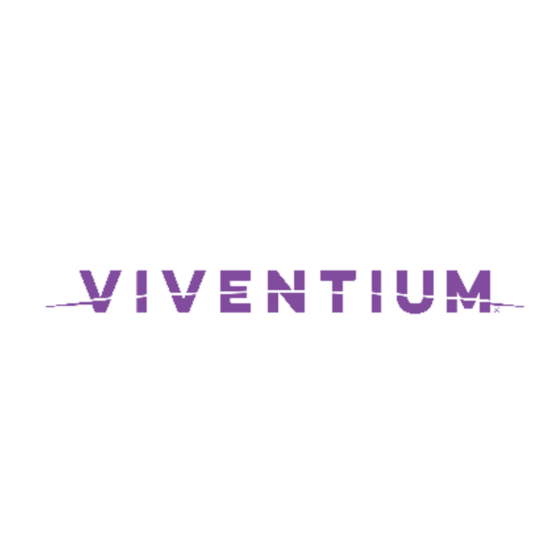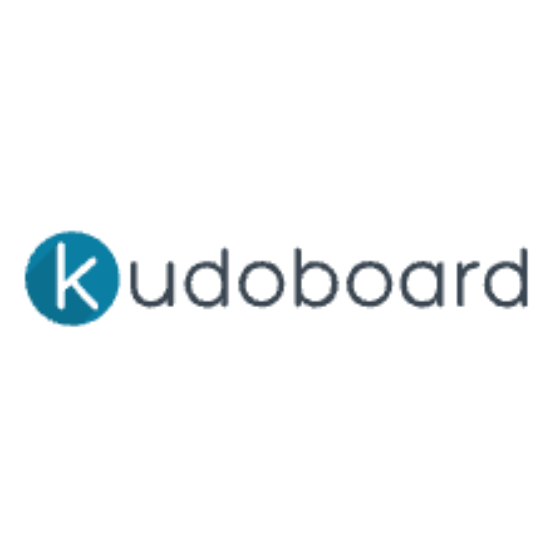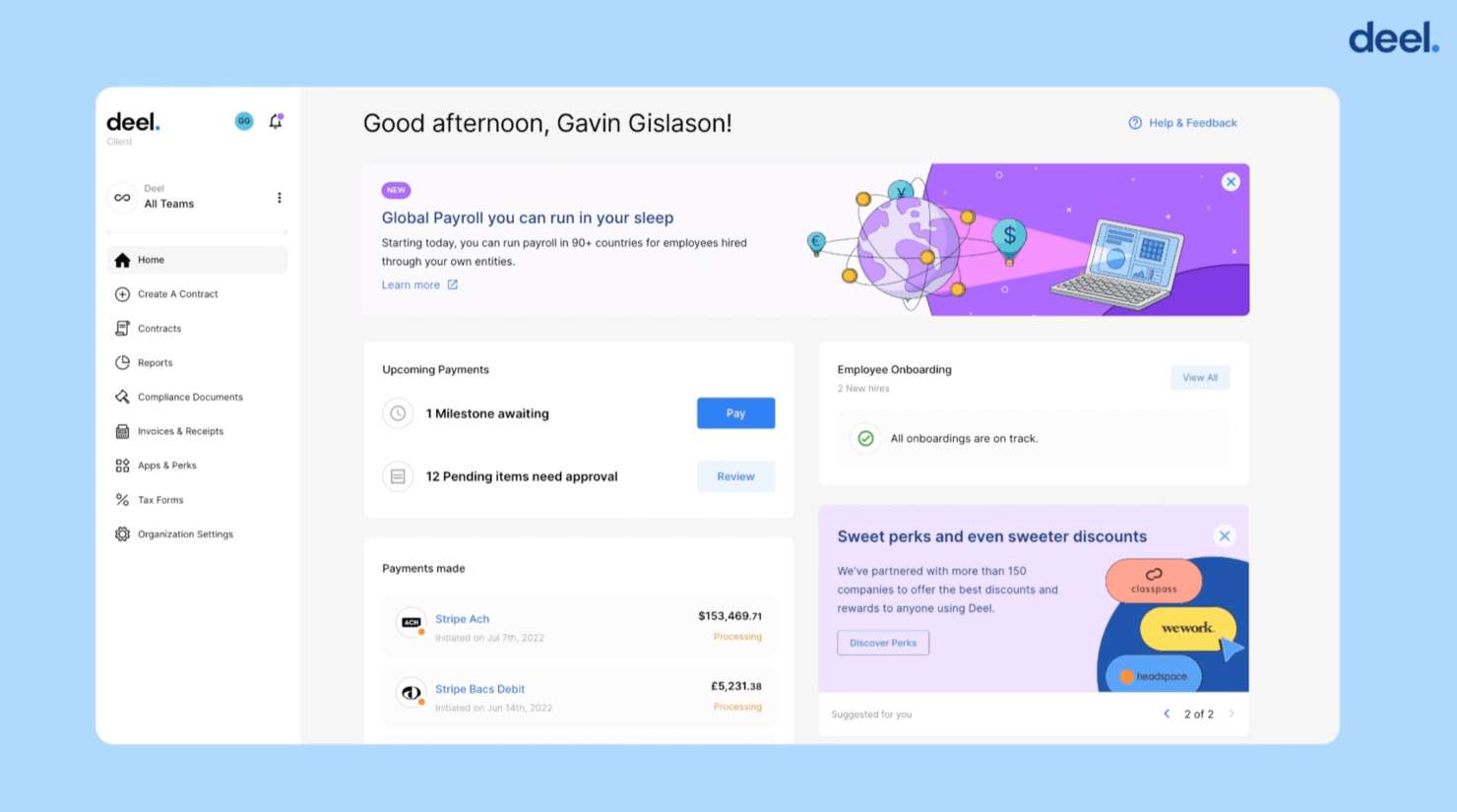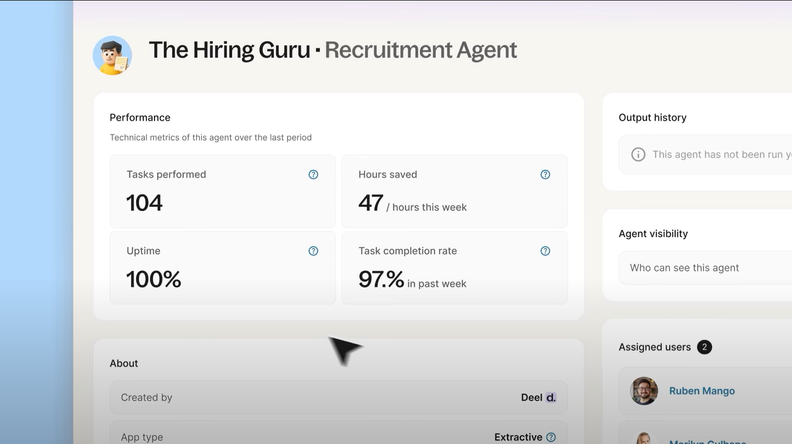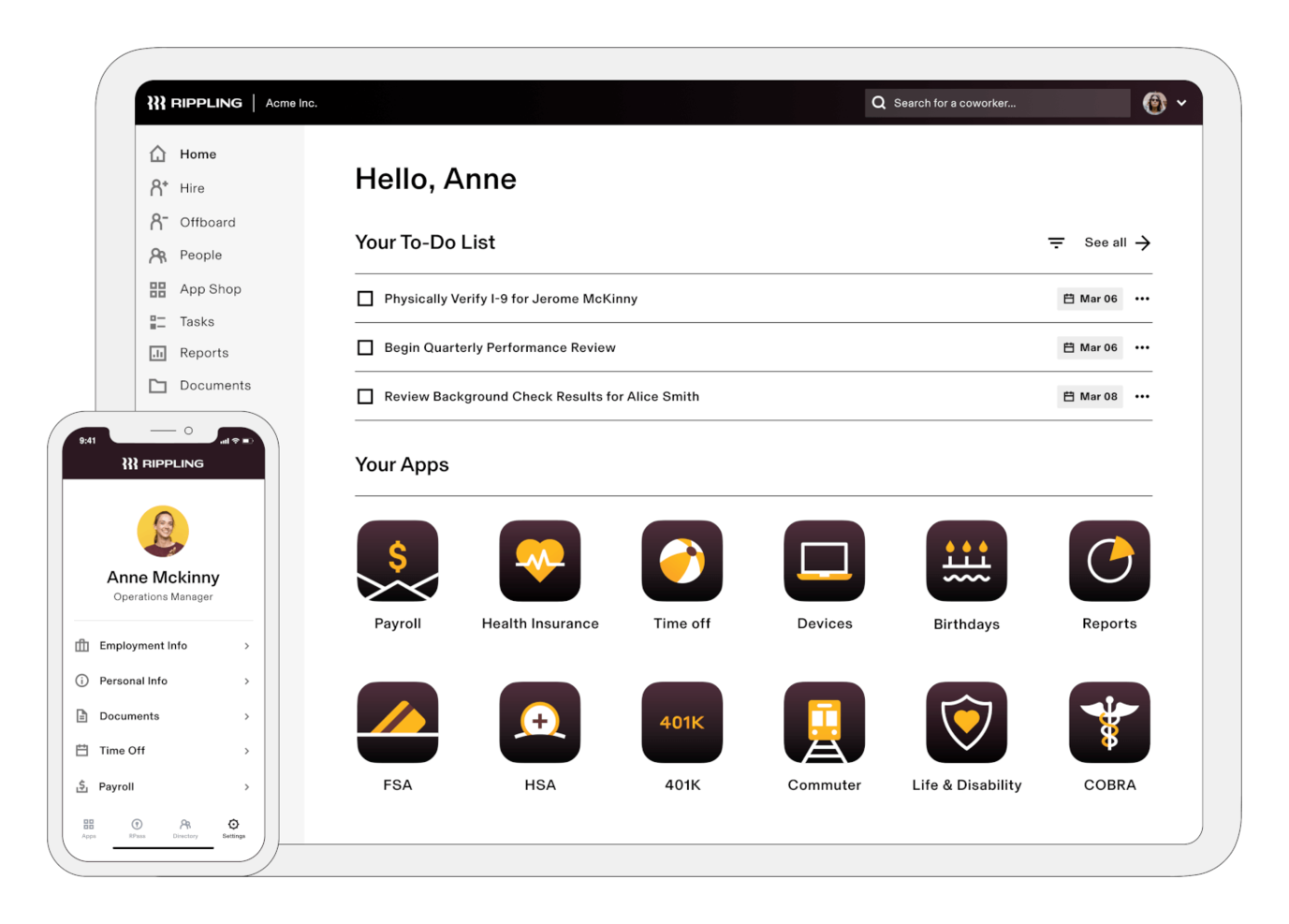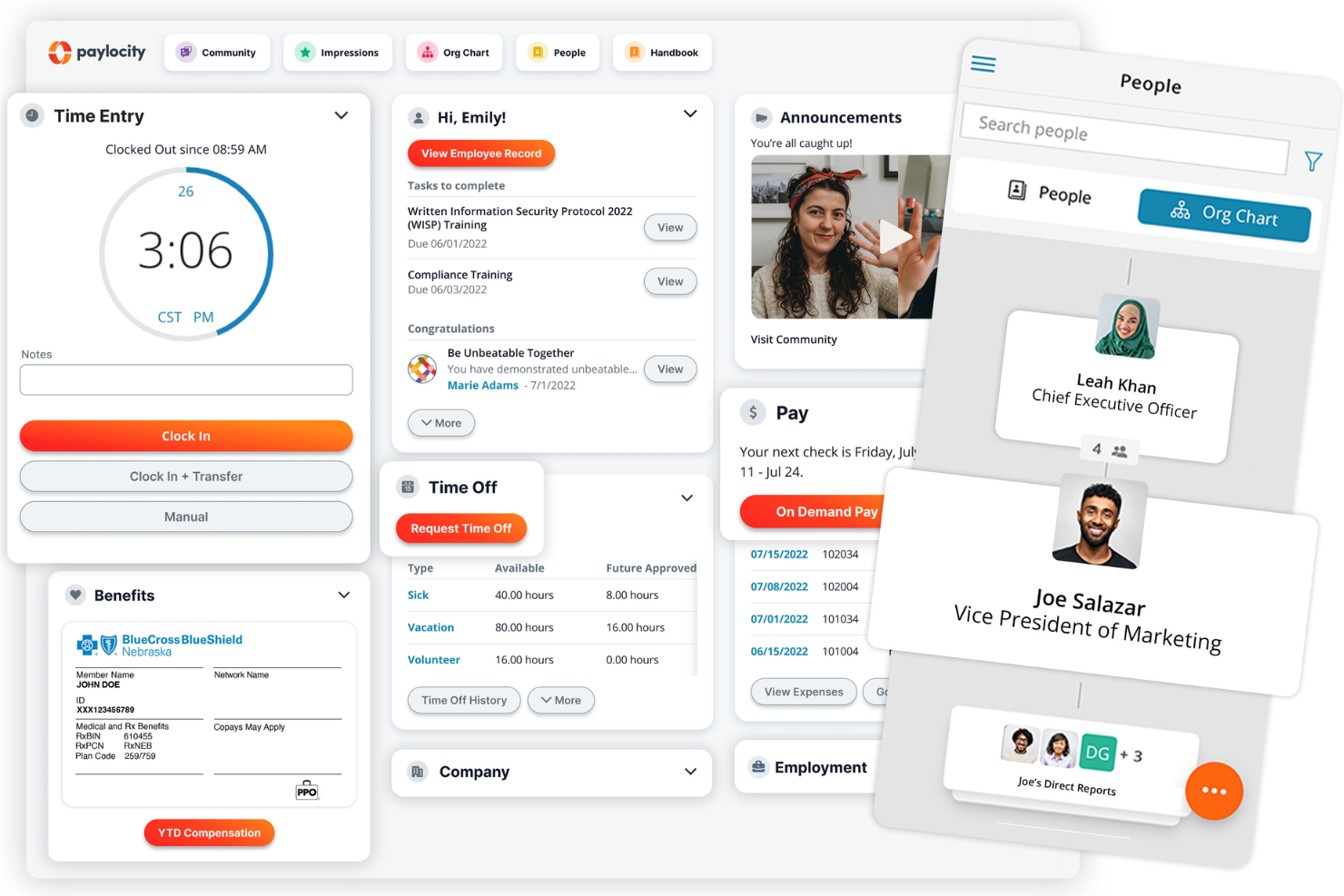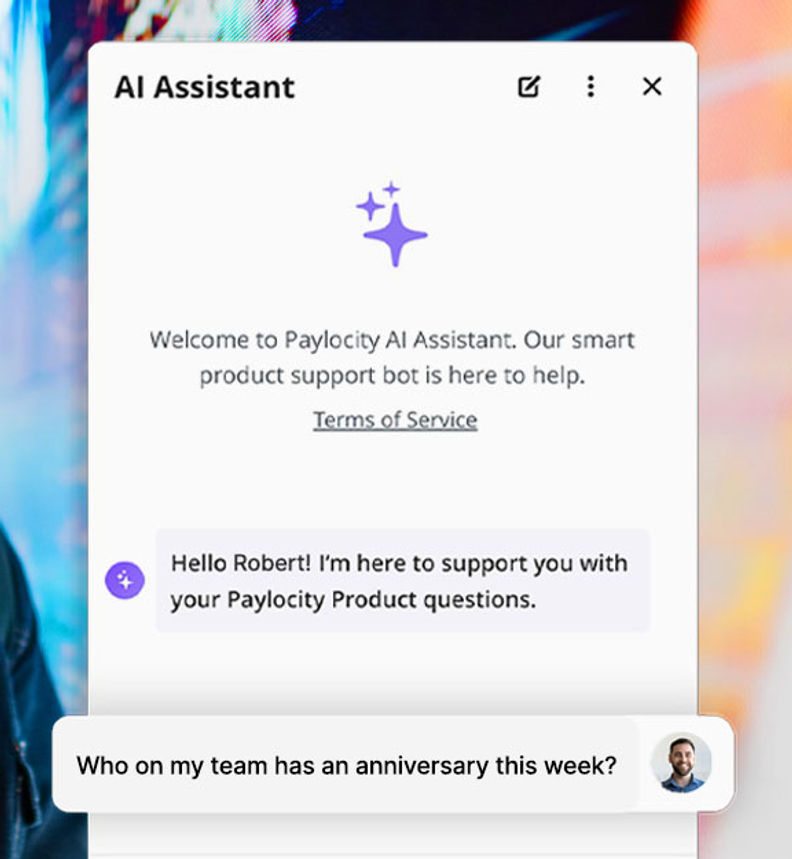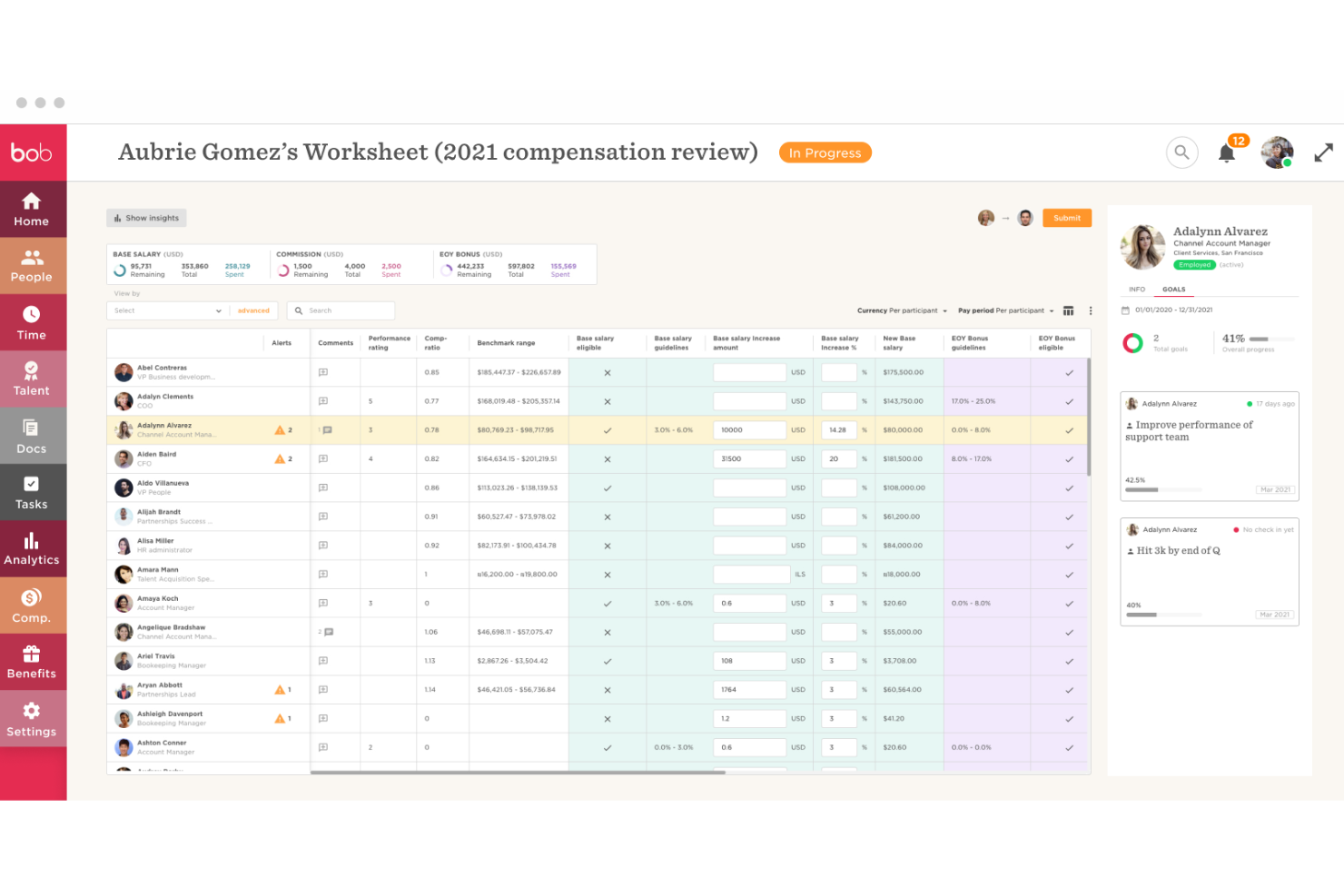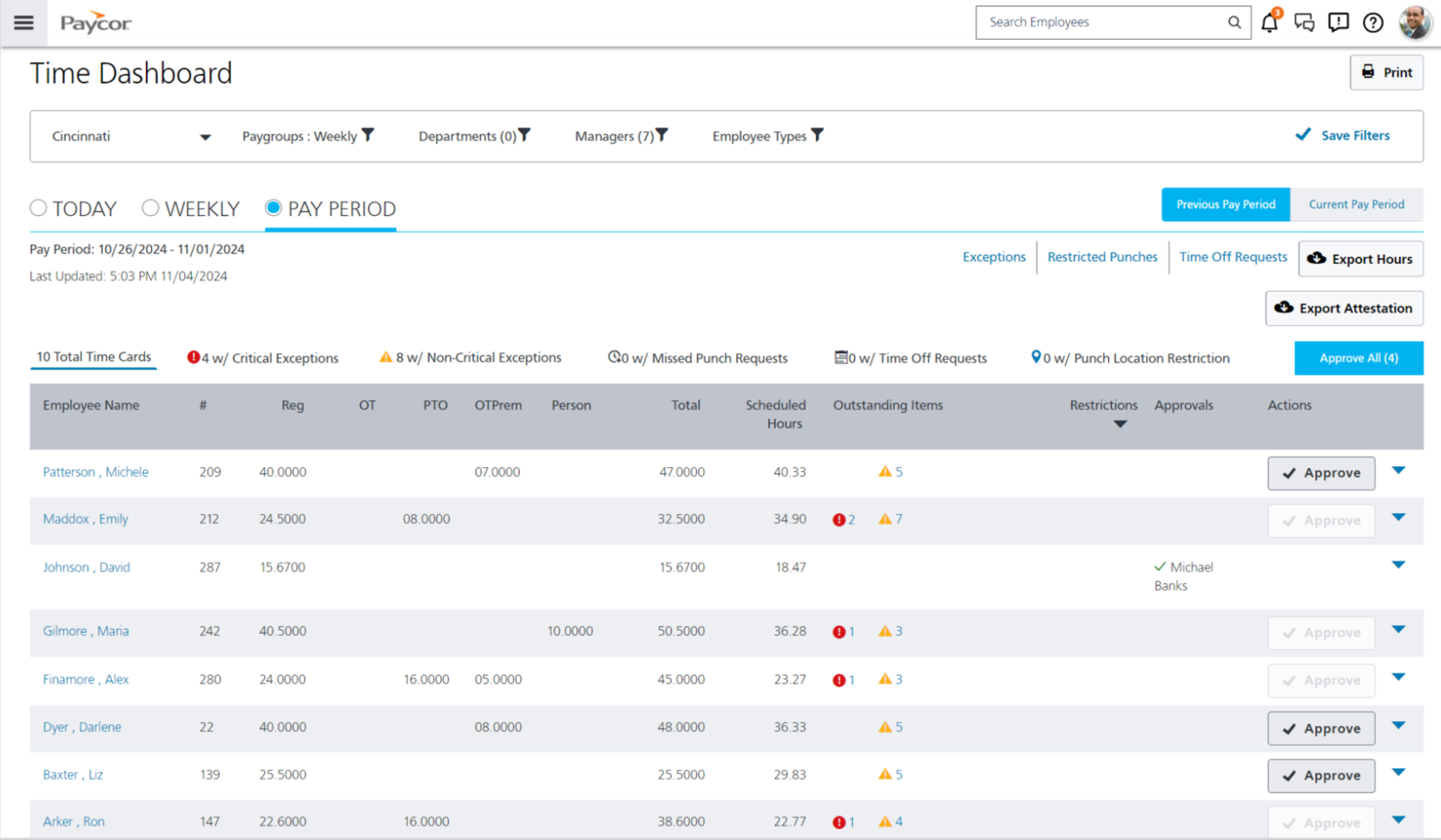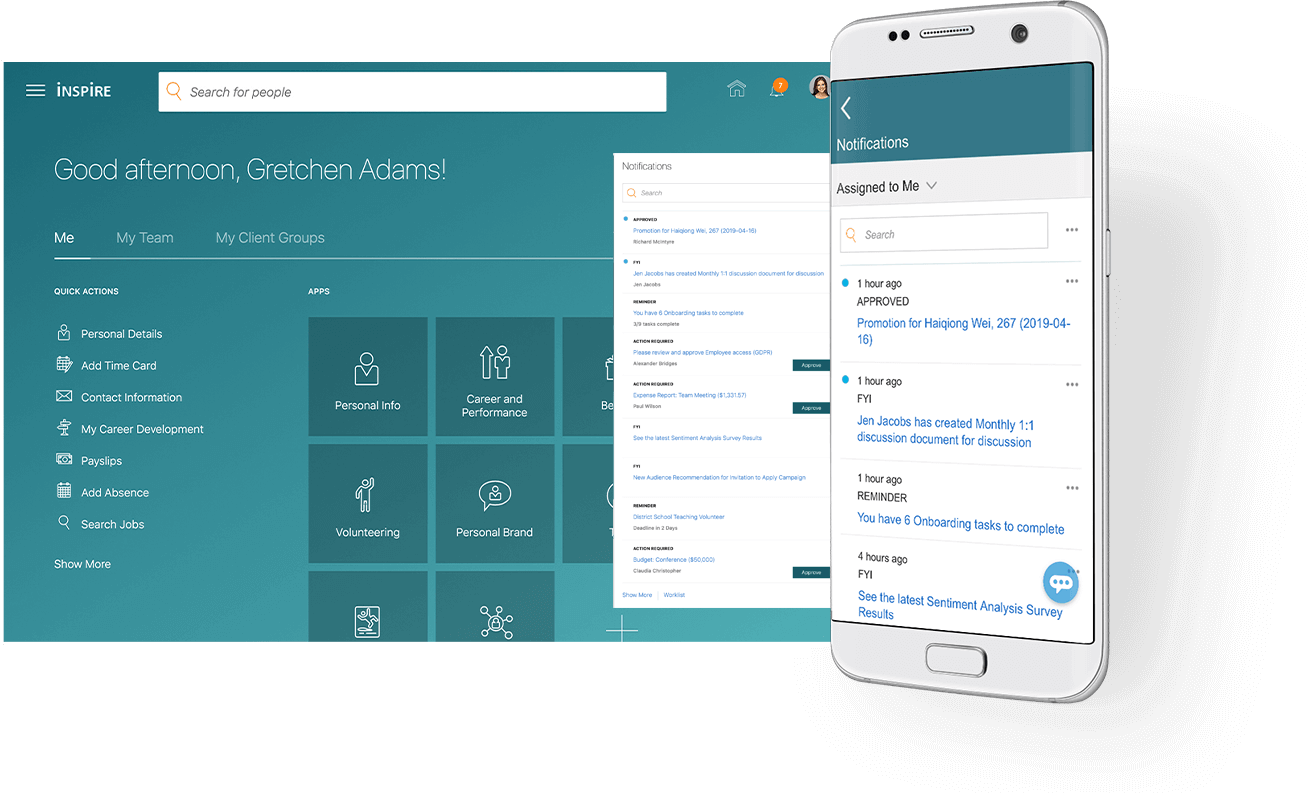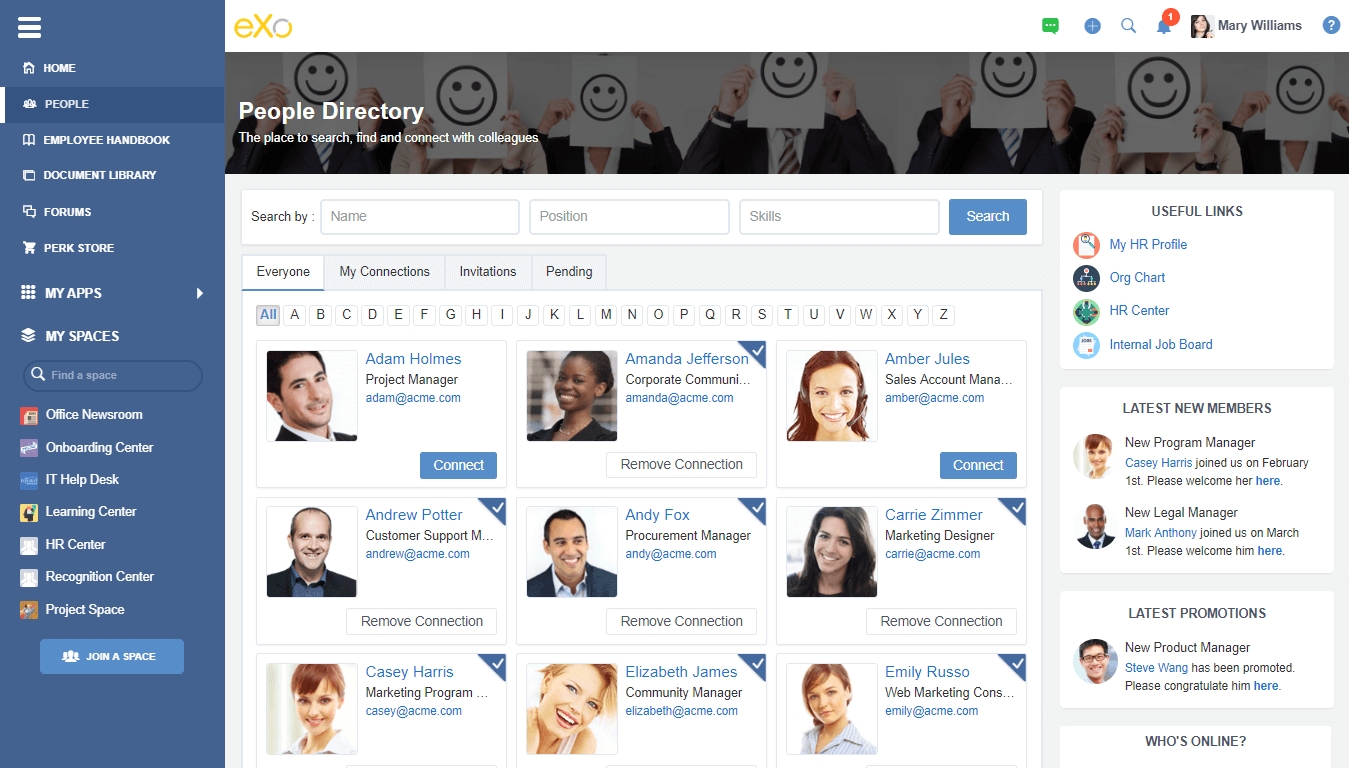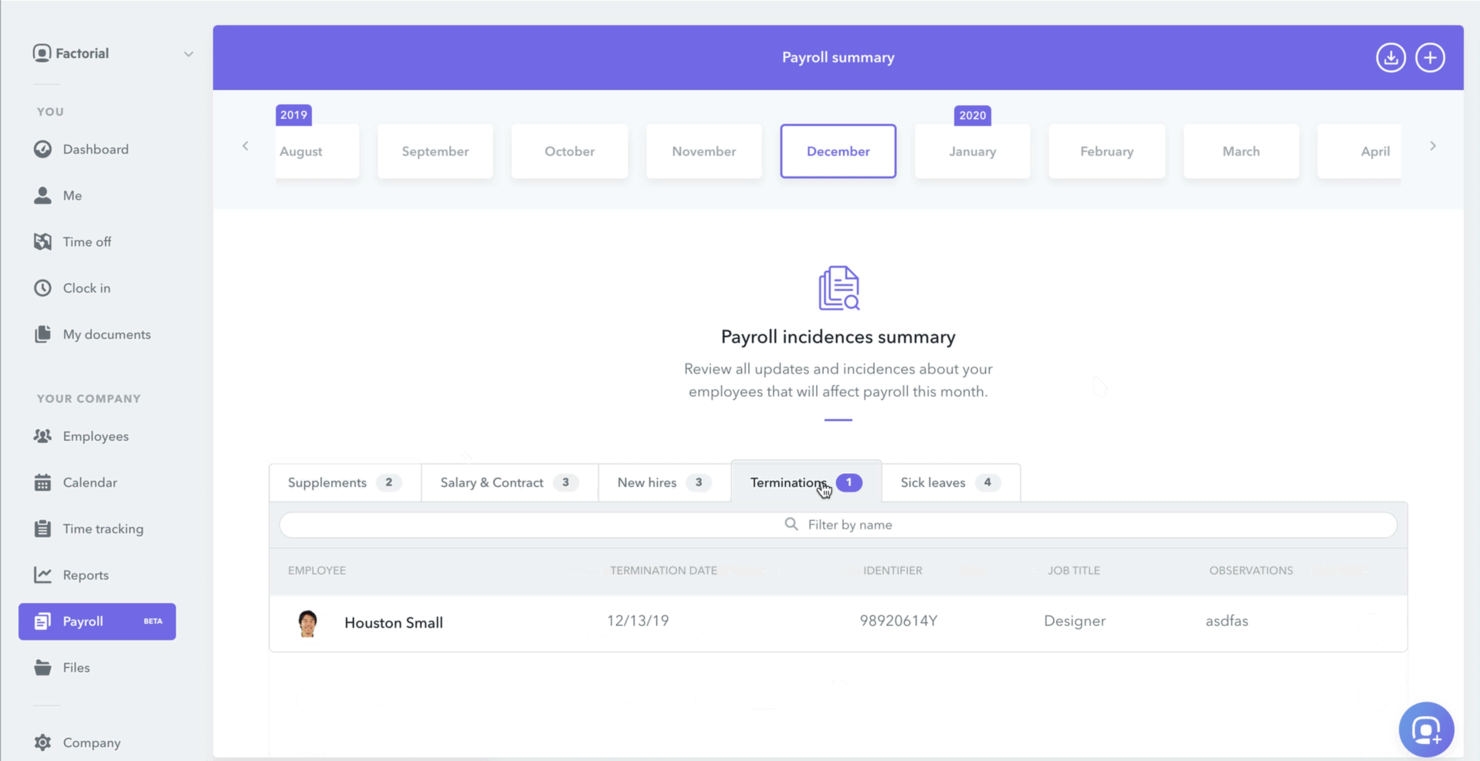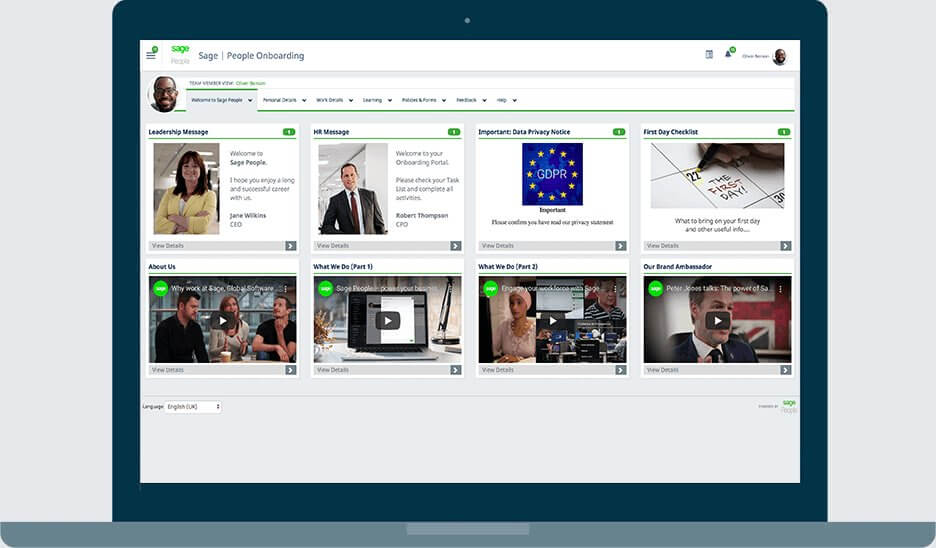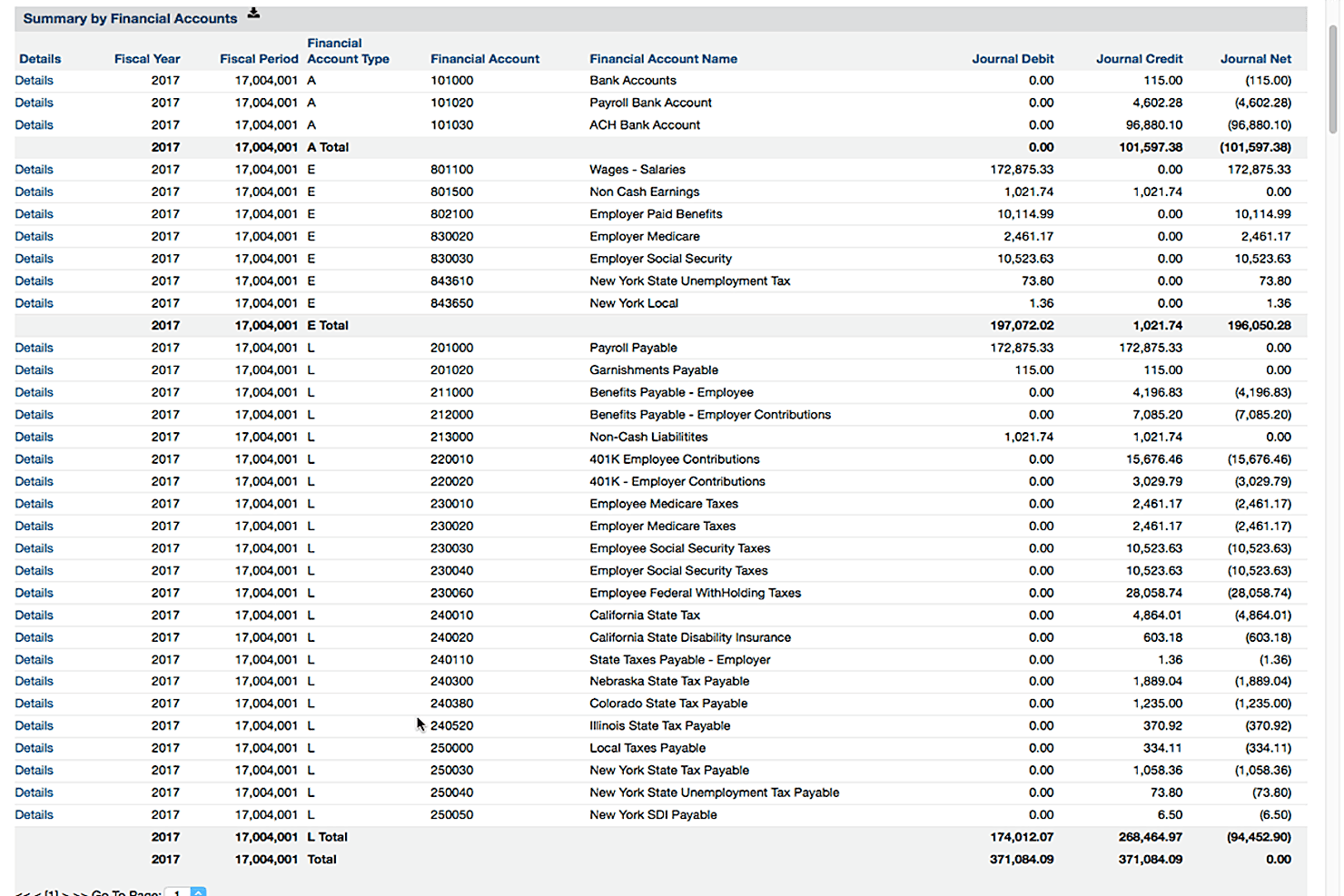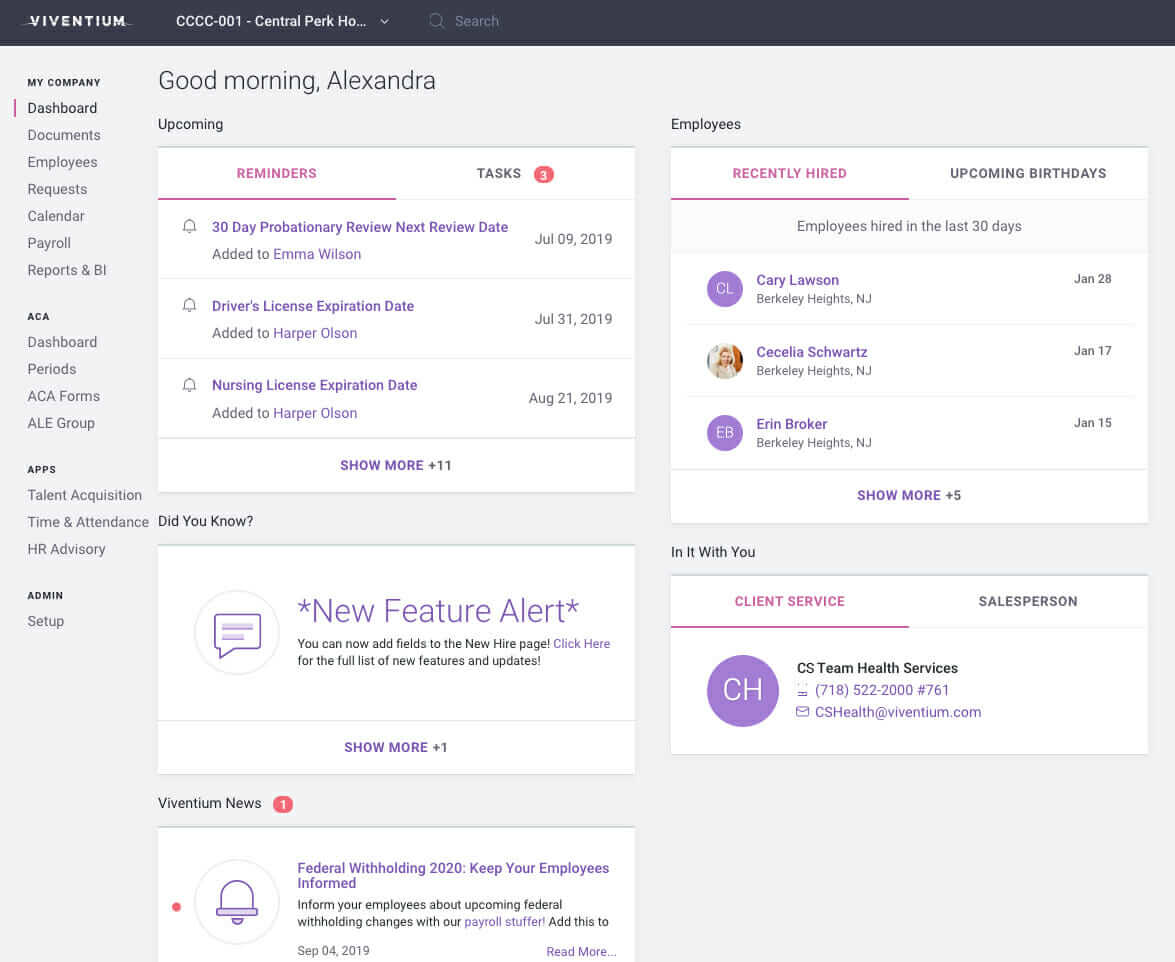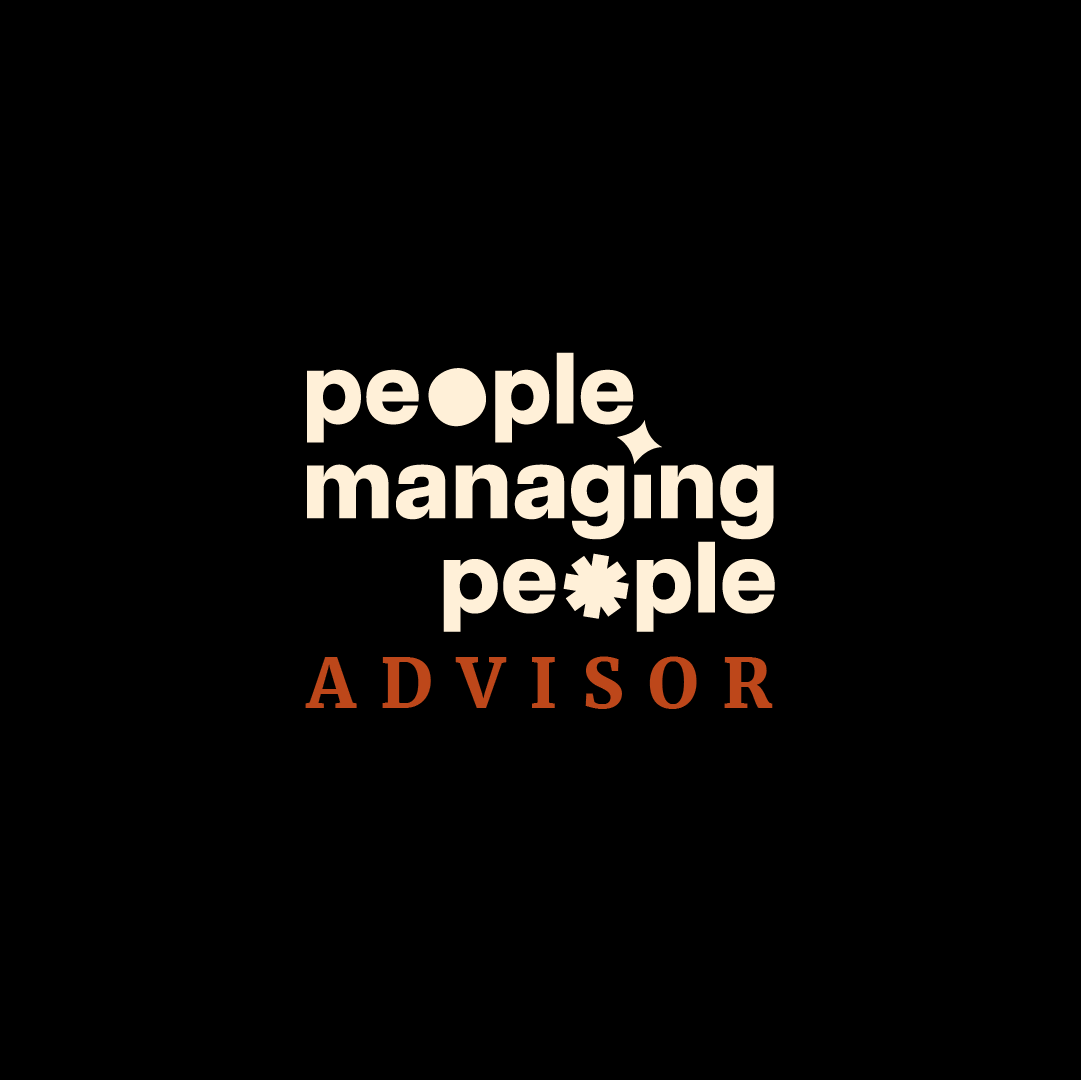20 Best HCM Software Shortlist
Here's my pick of the 20 best software from the 36 tools reviewed.
The best HCM (Human Capital Management) software brings all your HR needs—hiring, onboarding, payroll, performance, and offboarding—into one place. With everything centralized, you can cut down on admin work, stay compliant, and get the insights you need to make better decisions about your workforce.
Instead of relying on disconnected tools and spreadsheets, the right HCM software should automate repetitive tasks, keep your data accurate, and give you real-time analytics that improve both employee experience and business results.
I’ve spent years testing and rolling out HCM platforms for companies of all sizes, and I’ve pulled together the top options that are easy to use, scalable, and built to support productivity and growth. In this guide, you’ll find the best HCM software in 2025 to match your budget, team size, and goals.
Why Trust Our Software Reviews
Best HCM Software Summary
This comparison chart summarizes pricing details for my top HCM software selections to help you find the best one for your budget and business needs.
| Tool | Best For | Trial Info | Price | ||
|---|---|---|---|---|---|
| 1 | Best for managing global teams | Free trial + demo available | From $29/month | Website | |
| 2 | Best all-in-one HCM software | Free demo available | From $8/user/month (billed annually) | Website | |
| 3 | Best for HR, payroll, and integrations in one | Free demo available | Pricing upon request | Website | |
| 4 | Best for compensation management | Free demo available | Pricing upon request | Website | |
| 5 | Best for payroll automation | 30-day free trial | Pricing upon request | Website | |
| 6 | Best for mobile accessibility | Free trial available | Pricing upon request | Website | |
| 7 | Best for safety-sensitive industries | Free demo available | From $13/user/month, with a minimum of 1000 employees | Website | |
| 8 | Best for customized onboarding | Free demo available | From $8/employee/month + a $49 base fee/month | Website | |
| 9 | Best for hourly employee support | Free demo available | From $6/user/month (billed annually) + $49 base fee per month | Website | |
| 10 | Best for employee engagement | Free demo available | From $5/user/month | Website | |
| 11 | Best for European markets | Free demo available | From $8/user/month | Website | |
| 12 | Best for advanced people analytics | Free demo available | From $10/user/month | Website | |
| 13 | Best for large enterprises | Free demo available | Pricing upon request | Website | |
| 14 | Best for small and mid-sized organizations | Up to 6 months free | Flat user pricing, upon request | Website | |
| 15 | Best for managing employee benefits | 30-day free trial | From $4/month/employee | Website | |
| 16 | Best for HR and culture focus | Free demo available | From $9/user/month | Website | |
| 17 | Best for their scalable add-ons | Free trial + free demo available | Pricing upon request | Website | |
| 18 | Best for construction companies | Free demo available | Pricing upon request | Website | |
| 19 | Best for customizing HR processes | Free demo available. | From $6/user/month, (billed annually). | Website | |
| 20 | Best for health services professionals | Free demo available | Pricing upon request | Website |
-

Kudoboard
Visit WebsiteThis is an aggregated rating for this tool including ratings from Crozdesk users and ratings from other sites.4.8 -

Rippling
Visit WebsiteThis is an aggregated rating for this tool including ratings from Crozdesk users and ratings from other sites.4.8 -

Paylocity
Visit WebsiteThis is an aggregated rating for this tool including ratings from Crozdesk users and ratings from other sites.4.5
Best HCM Software Review
Below are my detailed summaries of the best HCM software that made it onto my shortlist. My reviews offer a detailed look at the key features, pros & cons, integrations, and ideal use cases of each tool to help you find the best one for you.
Deel is an advanced HCM system that enables powerful, integrated HR functionalities for an international workforce.
Why I picked Deel: I included Deel in this list because of their advanced management capabilities that are compliant in over 150 countries. Its global-first design lets managers see full worker details for their entire workforce, which is great for getting a true overview of payroll costs and workforce capacity. Deel covers international payroll, PTO tracking, benefits administration, engagement tools like pulse surveys, and ongoing global compliance.
Overall, Deel offers great value for its price as a comprehensive and effective solution for all HR management needs. It offers clear, simple per-user pricing with no hidden fees or extensive contracts.
Deel Standout Features and Integrations:
In terms of features, Deel has a clean web interface, making it easy for users to navigate and find what they need. It also allows employees to access self-service features, including the ability to update and view their own information, such as pay stubs and contact details.
Deel also excels in analysis and reporting, offering customizable reporting features that can deliver actionable insights. Plus, 24/7 customer support is also available to ensure that users have assistance whenever they need it.
Integrations are available with Ashby, BambooHR, Expensify, Greenhouse, Hibob, Netsuite, Okta, OneLogin, Quickbooks, SCIM, Xero, Workday, and Workable. Or you can build your own integrations using the Deel API.
New Product Updates from Deel
Introducing Deel AI Workforce
Deel has launched the AI Workforce, a set of specialized agents designed to handle repetitive HR, payroll, and compliance tasks with speed and accuracy. These AI agents don’t just assist—they execute tasks from start to finish. For more information, visit Deel's official site.
Rippling is a modern HCM solution that's built to tackle new hires, deductions, time tracking, PTO requests, custom reports, and employee changes. It also offers advanced payroll management features, plus operational workflows, applicant tracking, and even some IT features like device and IT inventory management.
Why I picked Rippling: Their software stands out because they built app and device management (basic IT) into their HR platform, which is appropriate for the modern, online, all-digital workforce. You can remotely manage and protect employees’ devices (laptops, smartphones, tablets) and easily manage workforce apps like Google Workspace, Slack, and Office 365. Rippling is also competitively priced considering its wide range of features, making them a great option for smaller businesses with a tight budget.
Rippling Standout Features & Integrations:
Standout features for Rippling include their payroll management functionalities such as their automatic tax filing (it calculates and files your federal/provincial taxes, factoring in when employees move) and robust features that are helpful for pay compliance in a large workforce, such as automatic minimum wage enforcement, overtime enforcement, and leave enforcement.
Integrations are available with Google Workspace, Typeform, Databricks, BrightHire, Atlassian, Google Workspace, Slack, Checkr, Zoom, GitHub, Asana, 1Password, Zendesk, Dropbox, Sage Intacct, Netsuite, Microsoft 365, QuickBooks, DocuSign, Upwork, LinkedIn, and dozens more.
New Product Updates from Rippling
Rippling Now Integrates with Points North
Rippling's new integration with Points North automates certified payroll reporting, ensuring compliance with Davis-Bacon and prevailing-wage laws by synchronizing data in real time and reducing manual errors. More details at Rippling Blog.
Paylocity is a cloud-based human capital management platform designed to help midsized businesses scale their HR and payroll management. It offers tools for managing employee data, talent acquisition, and performance, allowing your team to oversee the entire employee lifecycle.
Why I picked Paylocity: I chose Paylocity for its robust combination of HR and payroll tools, all housed in a single, intuitive platform that’s ideal for growing midsized businesses. Its payroll processing offers built-in compliance, while its HR suite handles everything from onboarding and employee data management to performance tracking. What really sets it apart is its expansive ecosystem of integrations, allowing connectivity with over 400 tools like Salesforce, Google Workspace, Asana, and Greenhouse. This flexibility makes it easy to plug Paylocity into your existing tech stack and keep all your systems in sync.
Paylocity Standout Features & Integrations:
Standout features include payroll, benefits administration, and an employee recognition system to boost morale through peer-to-peer shout-outs and badges. The software also supports surveys, allowing you to gather real-time feedback on various workplace matters. Additionally, Paylocity’s reporting and analytics tools give your team detailed insights into HR trends and key metrics.
Integrations include ClearStar, Microsoft Dynamics 365, 7shifts, AirMason, APA Benefits, Azure, Atlassian, Asana, Box, ClearCompany, Dropbox, Freshdesk, Google Workspace, Greenhouse, HubSpot, Slack, Salesforce, Trakstar, and Zoho People.
New Product Updates from Paylocity
Paylocity AI Assistant Update
Paylocity introduces an AI Assistant that transitions from questions to actions swiftly, enhancing user efficiency. For more information, visit Paylocity's official site.
HiBob is a modern Human Capital Management (HCM) platform designed to enhance your company's HR processes. It offers tools to manage employee data, oversee performance, and foster engagement, all within a single platform.
Why I picked HiBob: One standout feature of HiBob is its comprehensive compensation management system. This tool allows you to handle salary reviews, bonuses, and equity allocations efficiently. By centralizing these processes, HiBob ensures transparency and fairness in compensation decisions, which can boost employee satisfaction and retention. I also like HiBob's advanced people analytics. This feature provides real-time insights into various HR metrics, such as headcount, growth, retention, and absenteeism. With customizable dashboards and proactive insights, you can make data-driven decisions that align with your organization's goals.
HiBob Standout Features & Integrations:
Standout features include a time and attendance management system that simplifies tracking work hours and attendance policies, ensuring accurate payroll processing. Additionally, HiBob's onboarding workflows automate the onboarding process, helping new hires integrate smoothly into your company culture. The platform also offers a "Your Voice" feature, providing a safe and anonymous way for employees to report concerns.
Integrations include ADP, Microsoft Entra ID, TriNet, Deel, Jobvite, Jobylon, Kamsa, Microsoft Teams, G Suite, Go1, Jira Service Desk, and NetSuite.
Paycor is a human capital management platform for small to mid-sized businesses in industries like healthcare and manufacturing. It performs key business functions such as payroll processing, talent acquisition, and benefits administration.
Why I picked Paycor: Paycor excels in payroll automation, simplifying the payroll process for your business. You can efficiently pay employees and maintain tax compliance with minimal manual effort.
The tool’s AI technology provides data insights, helping improve decision-making. This makes Paycor a reliable choice for automating payroll tasks.
Standout features & integrations:
Features include an intuitive payroll dashboard, automated tax filing, and customizable reporting. You can also access employee self-service portals, which allow your team to manage their own information and documents. Additionally, the time and attendance tracking feature ensures accurate payroll calculations.
Integrations include QuickBooks, Xero, Indeed, ZipRecruiter, PrismHR, Checkr, Newton, and Salesforce.
Pros and cons
Pros:
- Automated tax filing
- Employee self-service portals
- Easy payroll automation
Cons:
- Occasional software updates required
- Limited international payroll support
FactoHR is an HR and payroll software solution tailored for small to medium-sized businesses. It handles functions like attendance tracking, payroll processing, and employee self-service, offering convenience and efficiency to your team.
Why I picked FactoHR: FactoHR is designed for mobile accessibility, allowing your team to manage HR tasks on the go. Its mobile app provides features like attendance punching, ensuring accurate time tracking wherever your employees are.
You can also access payroll information and employee records from your mobile device. This flexibility makes it an excellent choice for businesses with remote or mobile workforces.
Standout features & integrations:
Features include a comprehensive leave management system that simplifies vacation requests and approvals. The performance management tools help you set goals and track employee progress. Additionally, the payroll automation feature ensures timely and accurate salary processing.
Integrations include QuickBooks, Tally, SAP, Oracle, Microsoft Dynamics, FreshBooks, Xero, Zoho, BambooHR, and Slack.
Pros and cons
Pros:
- Performance tracking tools
- Accurate time tracking
- Mobile app access
Cons:
- Initial setup complexity
- Basic reporting capabilities
Chances are, you've probably heard of Oracle, as they are a big name in the HR software business. Oracle HCM Cloud is their all-in-one HR solution to engage your workforce and optimize your HR operations. It includes a wide range of features, including workforce modeling, an HR help desk, talent acquisition tools, and time-saving integrations between time-off data and payroll.
Why I picked Oracle HCM Cloud: Their HCM platform is well-suited for safety-sensitive industries due to it's integrated workforce health & safety (H&S) monitoring capabilities. Key features within its H&S module include incident reporting and incident management, workplace protection information, incident alerts for HR and other key stakeholders, and a safety data dashboard that tracks key performance indicators regarding safety objectives. The dashboard gives teams a summary of safety trends or patterns that may be developing to help teams take action quickly.
Oracle HCM Cloud Standout Features and Integrations:
Other standout features include assets like self-service compensation charts for employees, profitability and cost management dashboards, and lots of scheduling capabilities (static schedules, rotas, holiday calendars, and split or dynamic shifts, etc.). In addition, Oracle's Mobile Workforce Management (MWM) app is a highly functional, fully-featured smartphone app companion.
Integrations are available through Oracle Integration and Oracle SOA Suite, which can integrate any SaaS or on-premise HCM application. In addition to application adapters, Oracle offers many other integration options including technology adapters for REST, SOAP, LDAP, FTP, and file-based access. Thus, they scored highly in the Integrations section of the evaluation.
Eddy is an all-in-one HR Suite built for local businesses that streamlines tedious HR processes and improves the employee experience. With Eddy, businesses can hire, onboard, manage, and pay employees with one easy-to-use software, which has grown in popularity due to its focus on supporting businesses with deskless workers and its highly-rated customer service.
Why I picked Eddy: Their simple, yet robust onboarding process makes the transition from candidate to new hire easy to manage. You can easily communicate important information to your new hires like start date, starting pay, who their manager is, and what they should wear on their first day to work. You can also create customizable “New Hire Packets” that include an onboarding agenda, and the other necessary documents employees need to sign, which can be completed easily from mobile devices too.
All documents can be signed electronically, plus you can assign specific due dates to paperwork and tasks, and company admins will receive updates regarding the new hire’s progress. Eddy's onboarding also helps your team stay aligned by assigning internal team tasks to make sure the new hire has a desk, laptop, or other necessary essentials.
Eddy Standout Features and Integrations:
A core function of Eddy is people management—users can access company directories and store important employee documents, add notes on employee performance, and track training and certifications in employee profiles. You can also create custom paid time-off (PTO) policies and approve or deny requests; tap into their time tracking tool, which allows employees to easily clock-in and clock-out; and navigate payroll processes using Eddy’s in-house, full-service system that includes support for multiple pay periods and end-of-year W-2 preparation, filing, and distribution.
Other key features include job posting management, tracking incoming candidates, and a full-scale applicant tracking system (ATS).
Integrations are available with Indeed, Glassdoor, and SynergySuite.
Gusto is a modern payroll, benefits, and HR management platform built specifically for small businesses, with powerful tools that make it especially well-suited for companies employing hourly or shift-based workers. It streamlines payroll, automates compliance, and simplifies employee benefits, all within a clean and easy-to-use interface.
Why I picked Gusto:
Gusto stands out for its seamless payroll and time-tracking capabilities, making it a top choice for businesses managing hourly employees. The platform automatically syncs time data from integrated scheduling and attendance systems, ensuring accurate wage calculations—including overtime, PTO, and state-specific breaks. This minimizes errors and saves hours of manual work each pay period.
Its automated payroll processing ensures employees—hourly or salaried—are paid correctly and on time, with direct deposit, paycheck, and pay card options. Gusto also manages tax filings for federal, state, and local jurisdictions, ensuring compliance across all payrolls.
Beyond payroll, Gusto makes benefits administration simple with built-in health insurance management, 401(k) plans, and workers’ compensation.
The system’s intuitive design, combined with its automation and integrations, makes it ideal for businesses that need a reliable payroll solution without a full HR department.
Gusto Standout Features & Integrations:
Features include automated payroll, hourly and time-based pay tracking, health insurance and 401(k) administration, and automated tax filing for all 50 states. The compliance support tools help businesses stay up to date with evolving wage and labor laws, while custom PTO policies and time-off tracking improve transparency and fairness for hourly staff.
Gusto also offers onboarding tools, offer letter templates, and document e-signatures to make bringing new hourly employees onboard faster and paperless. HR teams can also use reporting tools to track payroll expenses, labor costs, and employee trends over time.
Integrations include QuickBooks, Xero, FreshBooks, Clover, TSheets, When I Work, Deputy, Trainual, Expensify, and Zapier, enabling seamless connections with popular accounting, time-tracking, and workforce management software.
Pros and cons
Pros:
- Intuitive interface with strong time-tracking integrations
- Automated, accurate payroll with real-time tax filing
- Excellent for hourly and shift-based workers
Cons:
- Limited international payroll support
- Benefit availability varies by state
eXo Platform is an all-in-one digital workplace solution that helps you connect, align, and engage your teams around a single interface. It is designed to fit the needs of enterprises of all sizes and industries that are looking to improve the company and peer-to-peer communication, boost collaboration, and manage company knowledge.
Why I picked eXo Platform: Their software has a rich set of features to improve the working experience, including enterprise social networking features such as user profiles, activity streams, and more. Users can easily navigate through the platform and interact with their peers through a built-in chat application and the ability to like, comment on, and share various pieces of content. They also offer built-in add-ons such as an eXo Wallet, gamification, kudos, chat, and more.
eXo Platform Standout Features and Integrations:
Features include collaborative groups where users can communicate, collaborate on projects, and easily find what they're looking for. Plus, their system also includes document management features that allow users to share content easily through drag-and-drop, organize content in rich document libraries, and share information with the click of a button in the activity stream or the chat application.
Integrations are available with third-party applications including Salesforce, Microsoft Office, and Google Suite.
Factorial is a human resources management platform designed for small to medium-sized businesses, particularly in Europe. It handles key HR functions such as employee time tracking, document management, and performance evaluations.
Why I picked Factorial: Factorial is tailored for the European market, offering compliance with local labor laws and regulations. It offers multilingual support, making it accessible to diverse teams.
The tool includes features like automated payroll management to simplify your HR processes. Its focus on European compliance ensures your team stays aligned with regional requirements.
Standout features & integrations:
Features include an intuitive time tracking system that helps you monitor employee hours accurately. The document management feature allows you to store and organize HR documents securely. Additionally, the performance evaluation tools help you assess and improve employee productivity.
Integrations include Google Calendar, Slack, Microsoft Teams, BambooHR, Zapier, Personio, Trello, Asana, Jira, and Outlook.
Pros and cons
Pros:
- Secure document storage
- Multi-language support
- Compliance with European labor laws
Cons:
- Limited scalability for larger enterprises
- Occasional software updates
Over 10 years, the Sage Business Cloud People system has grown into a respected and progressive company operating in the HR management software sector with a full suite of people analytics tools.
Why I picked Sage People: Sage People excels in quick implementation, out-of-the-box automations, and streamlined and flexible reporting features. Their HCM platform is also the #1 rated HR and People management system according to Salesforce.
Sage People Standout Features and Integrations:
Standout features for Sage HR includes customizable dashboards to analyze key metrics like attraction, retention, hiring trends, and any other HR metrics or key performance indicators (KPIs) that matter for your organization. Their analytics also include easy-to-digest visualizations such as charts, tables and other graphics like doughnut, pie, and radar charts. Additionally, if you check out their workforce engagement tools, you are bound to find something you love.
Integrations are available with Salesforce, ADP, activpayroll, Brain Payroll, TalentLMS, OwnBackup, Broadbean, Docusign, and Kimble.
Workday is a cloud-based human capital management software tailored for large enterprises, offering solutions for HR, finance, and planning. It supports complex business needs with features like workforce planning, payroll, and talent management.
Why I picked Workday: Workday is designed for large enterprises, providing scalability and comprehensive features to meet diverse business needs. With its advanced workforce planning tools, you can align your HR strategy with business goals.
The software’s talent management feature helps identify and develop top talent across your organization. These capabilities make Workday an ideal choice for large enterprises looking for a scalable and integrated HCM solution.
Standout features & integrations:
Features include advanced analytics that provide insights into workforce trends and performance. The payroll management system ensures accurate and timely salary processing. Additionally, the financial management tools help integrate HR and finance functions for better decision-making.
Integrations include Salesforce, Microsoft Azure, Slack, Google Cloud, SAP, Oracle, IBM, ServiceNow, Adobe, and Okta.
Pros and cons
Pros:
- Strong analytics capabilities
- Comprehensive talent management
- Integrated HR and finance functions
Cons:
- Limited customization options
- Complex implementation process
PrimePay is a comprehensive HCM software solution designed specifically for small and midsized businesses (SMBs). It provides a suite of tools to manage payroll, benefits administration, time and attendance tracking, performance management, and employee self-service.
Why I picked PrimePay: As an HCM software for small and mid-sized organizations, PrimePay offers user-friendly features that address the unique challenges faced by these businesses. For example, the platform’s automated payroll system simplifies payroll processing, tax filings, and compliance, while its benefits administration capabilities help manage employee benefits. The integration of these essential HR functions into a single platform allows SMBs to focus more on their core operations.
PrimePay Standout Features & Integrations:
Standout features include a time and attendance tracking system that accurately captures employee hours, ensuring compliance with labor laws. The employee self-service portal gives employees access to payroll information, benefits details, and the ability to request time off. Additionally, PrimePay’s performance management tools support businesses in setting goals, providing feedback, and tracking employee progress.
Integrations include Slack, Personio, Google Sheets, Okta, Purdue Global, Salesforce, Engagedly, Microsoft Teams, Gusto, and LinkedIn Learning.
UZIO HRIS solution is an all-in-one platform that’s best for small and medium-sized businesses. It covers employee onboarding features, HR automation, and time-off tracking, and allows for easy PTO approvals by scheduling managers.
Why I picked UZIO: UZIO prides itself on usability and user experience—and it shows. They turn complex HR systems like payroll and benefits into clean, well-organized menus with an intuitive design that lends itself well to employee self-service needs. Onboarding processes and open benefits enrollment are particularly useful with the potential to be big crowd-pleasers in the now-not-later info economy.
UZIO Standout Features and Integrations:
On top of expected payroll functionality, UZIO can also help HR managers build benefits plans and quotes, plus track employee enrollment. UZIO’s cloud-based payroll system can even track affordable care act (ACA) compliance and can adapt to changing tax laws. UZIO ensures federal and state law compliance and accounts for any year-over-year changes in this regard. UZIO lets you pick and choose what tool you need so you only pay for what you actually use.
UZIO’s all-in-one package is probably the most bang for your buck ($10/month/employee + $30/month flat rate) and it encompasses all your human capital management basics: onboarding, offboarding, benefits syncing, payroll tax management, garnishments, time tracking, and ACA compliance.
One thing to note is that UZIO HRIS is only available for use within the US.
Integrations include QuickBooks, Checkr, and RapidPay, enabling smooth payroll and accounting workflows. Additionally, UZIO connects with benefits providers, offering a unified experience for benefits administration. The platform also supports third-party integrations through APIs, allowing businesses to customize and expand their HR ecosystem as needed.
Namely is an all-in-one human resources, payroll, and benefits management platform designed specifically for mid-sized companies. It helps organizations simplify core HR functions while strengthening company culture through tools for communication, recognition, and performance management.
Why I picked Namely:
Namely stands out for its focus on people and culture as much as process. It’s not just a system for managing HR tasks—it’s designed to make HR more personal and engaging.
The platform includes a social news feed, allowing employees to celebrate achievements, share updates, and engage with company-wide announcements. This feature helps build stronger connections among teams, especially in hybrid or distributed environments.
Namely’s performance management tools encourage ongoing feedback, goal alignment, and regular check-ins, supporting a culture of continuous growth and development. Its employee engagement features—such as peer recognition, surveys, and customizable review templates—make it easy for HR leaders to track sentiment and reinforce company values.
On the administrative side, Namely integrates payroll, benefits, and compliance into one seamless platform. This eliminates data silos, reduces errors, and improves efficiency for HR teams. Plus, the system’s customizable dashboards allow HR professionals to tailor workflows, reports, and visualizations to their unique organizational needs.
Namely Standout Features & Integrations:
Features include performance management tools, employee engagement surveys, and a social news feed that fosters community and collaboration. The platform also offers automated payroll processing, benefits enrollment management, and a built-in compliance database that helps HR stay current on changing regulations.
Namely’s self-service portal empowers employees to access pay stubs, request time off, and update personal details independently, reducing administrative workload. Its reporting and analytics suite provides insights into workforce trends, turnover, and engagement metrics, giving HR leaders the visibility they need to build a strong company culture.
Integrations include NetSuite, QuickBooks, Xero, Greenhouse, JazzHR, Indeed, Zapier, Slack, Microsoft Azure, and Google Workspace, allowing Namely to connect easily with existing systems across HR, finance, and collaboration tools.
Pros and cons
Pros:
- Great fit for mid-sized, growing companies
- Customizable dashboards tailored to organizational needs
- Strong focus on company culture and employee engagement
Cons:
- Advanced analytics may require add-on support or training
- Limited customization for some prebuilt performance templates
SAP SuccessFactors HCM is a comprehensive human capital management (HCM) and HRIS platform designed to help enterprises manage their entire workforce—from core HR functions to talent development and performance.
As part of SAP’s global suite of business solutions, SuccessFactors integrates HR management with analytics, payroll, and workforce planning to provide a unified, data-driven view of people and operations.
Why I picked SAP SuccessFactors HCM:
SAP SuccessFactors stands out for its modular flexibility and enterprise-grade scalability. The platform allows organizations to customize their HR system by selecting only the tools they need—such as core HR, payroll, recruiting, onboarding, performance management, or learning and development—and then scale easily as business needs evolve.
I particularly value its integration with SAP’s analytics and finance tools, which creates a seamless connection between HR data, business outcomes, and workforce planning.
The platform’s comprehensive capabilities make it ideal for large or growing organizations seeking a robust HRIS that centralizes data and automates complex HR processes. While its breadth of functionality can mean a steeper learning curve, the depth of features—combined with SAP’s global support—makes it a worthwhile investment for companies managing complex or distributed workforces.
SAP SuccessFactors HCM Standout Features & Integrations:
Features include core HR management, global payroll, recruiting and onboarding tools, and performance and goal management to drive alignment and accountability. The platform also includes learning and development modules, succession planning, and workforce analytics that help organizations identify skill gaps, forecast talent needs, and improve employee engagement.
SAP SuccessFactors’ flexible pricing model allows organizations to start small—typically under $10 per user per month for basic features—and expand with additional modules as requirements grow. Its advanced reporting and analytics capabilities provide HR teams with actionable insights across all aspects of the employee lifecycle.
Integrations include SAP’s own suite of ERP and analytics tools, as well as popular HR and productivity platforms like Workday, Microsoft Teams, ADP, and Slack, with additional connections available through APIs and integration middleware.
Arcoro is a human capital management software that's designed to help businesses manage their construction workforce more effectively. It's a comprehensive tool that covers everything from recruitment and onboarding to performance management and succession planning.
Why I picked Arcoro: Arcoro is a powerful and specialized HR software designed exclusively for construction companies, providing efficient management of diverse HR functions within the industry. Arcoro's construction-focused HRMS includes modules for tracking certifications, licenses, and safety training, guaranteeing that workers meet project requirements and remain compliant.
Arcoro also offers additional tools to automate essential processes like recruitment, onboarding, and employee record management, ensuring seamless workflows and compliance with industry-specific regulations.
Arcoro Standout Features and Integrations:
Arcoro excels in handling succession planning by offering comprehensive features that enable organizations to identify and develop potential successors for key roles within the company. It provides tools for talent assessment, competency mapping, and performance evaluation, allowing businesses to identify high-potential employees and create development plans tailored to their needs. Arcoro's succession planning capabilities also facilitate the creation of talent pools, tracking employee readiness and potential for advancement, while offering visibility into skills gaps and training requirements.
Integrations include Acumatica, Procore, Quickbooks, Sage, Viewpoint, and Foundation Software. They add that they can connect with other onboarding, core HR, and time-tracking apps but they don't list which ones by name.
SyncHR is an HCM software vendor that helps organizations streamline their operations and optimize human resource management processes.
Its core offering includes HRIS capabilities such as payroll processing, benefits administration, workforce analytics, and talent management features like applicant tracking and performance management tools. SyncHR is user-friendly and intuitive, allowing businesses to quickly onboard new users, set up new processes, and quickly access data. The platform includes advanced features such as automated workflows, electronic approvals, configurable dashboards, and reporting tools to enhance the user experience.
SyncHR offers customizable workflows that automate employee onboarding processes while allowing managers to monitor performance and development progress easily. Its performance management system ensures that team members are always on track toward success by providing real-time feedback. Its robust learning management system allows organizations to create custom learning paths based on individual needs while providing employees with access to hundreds of different training resources right within the platform. This makes it easy for employees to stay up to date on industry trends and gain the skills necessary for success.
The platform has robust reporting tools that allow users to run reports quickly and easily. The reports are comprehensive and provide valuable insights into areas like payroll costs, employee retention rates, and absenteeism trends, which can help businesses make informed decisions about their workforce strategy. The reporting features also make tracking compliance with regulations like FMLA or ACA requirements easy.
SyncHR’s integrated time and attendance tracking tool allows users to record employee hours accurately and efficiently while providing visibility into labor costs across departments or locations. The software’s employee self-service portal allows employees to access their profiles anytime, anywhere. This feature makes it easier for employees to update their personal information without waiting for the HR department to process changes.
Viventium is a cloud-based HR and payroll platform designed to simplify workforce management from hiring to retirement. It offers a complete suite of tools—including applicant tracking, onboarding, time and attendance, payroll, and HR analytics—to help organizations streamline processes and improve employee engagement.
Why I picked Viventium:
Viventium stands out for its intuitive interface and real-time updates, making payroll and HR management smoother for both administrators and employees. The platform allows HR teams to manage every aspect of the employee lifecycle—from recruitment through payroll processing and reporting—within one connected system.
I particularly value the company’s responsive customer service and comprehensive training resources, which help ensure users can navigate the system confidently and get answers quickly when needed.
Viventium Standout Features & Integrations:
Features include applicant tracking, employee onboarding, time and attendance tracking, payroll processing, and HR management tools. The system provides real-time data updates, ensuring accuracy in payroll calculations and compliance tracking.
Its business intelligence tools offer essential workforce insights, and built-in compliance features help organizations stay aligned with labor and tax regulations.
Viventium’s emphasis on customer support and user experience ensures smooth implementation and day-to-day use. Its training materials, online resources, and client support team make adoption straightforward for HR teams of all experience levels.
Integrations include time-tracking systems, accounting software, and HRIS tools, with additional connections available via API, allowing businesses to connect Viventium to their broader HR and finance ecosystem.
Other HCM Software
Here are some additional HCM software options that didn’t make it onto my shortlist, but are still worth checking out:
- Cezanne HR
For global compliance
- Odoo (HR module)
For open-source flexibility
- ADP
For handling multi-state payroll
- Zoho People
For remote workforce tracking
- PeopleGuru
For mid-market, US-based organizations
- Dayforce by Ceridian
For real-time data
- Mitratech Perform
For customizable performance management
- ADP Workforce Now
For integrating with other HR systems
- BambooHR®
HCM software for simplifying your employee lifecycle and building company culture
- Ceridian Dayforce
Cloud-based human capital management software for HR service delivery
- Zoho Recruit
HCM software for a combined talent acquisition and application tracking system
- HoneybeeBased
HCM software for retail or hospitality-based businesses
- Workforcethrive HCM
HCM software for integrated benefits management
- UKG Pro
HCM software with advanced talent management tools and AI-backed employee feedback sentiment analysis
- Infor CloudSuite HCM
HCM system for reporting and HR analytics capabilities
- Purley HR
HCM system for performance management and professional development initiatives
HCM Software Selection Criteria
When selecting the best HCM software to include in this list, I considered common buyer needs and pain points like managing employee data and ensuring compliance with regulations. I also used the following framework to keep my evaluation structured and fair:
Core Functionality (25% of total score)
To be considered for inclusion in this list, each solution had to fulfill these common use cases:
- Manage employee records
- Process payroll
- Track time and attendance
- Handle benefits administration
- Ensure compliance with regulations
Additional Standout Features (25% of total score)
To help further narrow down the competition, I also looked for unique features, such as:
- AI-driven analytics
- Customizable workflows
- Mobile app access
- Multi-language support
- Integrated learning management
Usability (10% of total score)
To get a sense of the usability of each system, I considered the following:
- Intuitive interface design
- Ease of navigation
- Minimal learning curve
- Customizable dashboards
- Responsive design for mobile use
Onboarding (10% of total score)
To evaluate the onboarding experience for each platform, I considered the following:
- Availability of training videos
- Interactive product tours
- Access to webinars
- Chatbot assistance
- Pre-built templates for setup
Customer Support (10% of total score)
To assess each software provider’s customer support services, I considered the following:
- 24/7 support availability
- Multiple support channels
- Response time efficiency
- Availability of a knowledge base
- Dedicated account managers
Value For Money (10% of total score)
To evaluate the value for money of each platform, I considered the following:
- Competitive pricing
- Scalability of pricing plans
- Inclusion of essential features
- No hidden costs
- Flexible subscription models
Customer Reviews (10% of total score)
To get a sense of overall customer satisfaction, I considered the following when reading customer reviews:
- Consistency of positive feedback
- Reported ease of use
- Customer service experiences
- ROI as perceived by users
- Frequency of feature updates
How to Choose HCM Software
It’s easy to get bogged down in long feature lists and complex pricing structures. To help you stay focused as you work through your unique software selection process, here’s a checklist of factors to keep in mind:
| Factor | What to Consider |
|---|---|
| Scalability | Will the software grow with your company? Consider whether it can handle additional employees and locations without significant cost increases or performance issues. |
| Integrations | Does it work with your existing systems? Check for compatibility with HR tools, payroll systems, and other software your team uses daily. |
| Customizability | Can you tailor the software to your needs? Look for options to adjust workflows and reports to fit your processes. |
| Ease of use | Is it user-friendly for your team? Prioritize intuitive interfaces that require minimal training, reducing the learning curve. |
| Implementation and onboarding | How long will setup take? Assess the time and resources needed for a smooth transition, including available training and support from the vendor. |
| Cost | Does it fit your budget? Compare pricing plans, hidden fees, and long-term costs. Consider the value against your HR needs. |
| Security safeguards | Are your data protected? Ensure the software meets industry standards for data protection and offers features like encryption and regular updates. |
What is HCM Software?
HCM software is a comprehensive digital tool for managing all aspects of human resources across the employee lifecycle. Features include recruitment and onboarding, payroll management, benefits administration, performance evaluation, talent management, time and attendance tracking, and HR analytics.
The purpose of HCM software is to effectively manage and optimize all human resource functions in one place, enhancing workforce productivity and engagement.
HRIS focuses on core HR processes like payroll and employee records, while HCM adds strategic elements like talent and performance management.
Features
Features are an important talking point when making a business case for any HR software. Here's a summary of the core features you should assess when trying to decide which HCM system is right for you:
- Robust Employee Profiles: The crux of every HCM system is the data, so you want a system with robust employee records that include fields you can customize for your own unique business needs. Any changes to your employee data should also populate across all system modules in real-time, so everyone on your HR team is always accessing up-to-date information.
- Advanced Payroll Management Features: The best systems can handle payroll processing, including automated deductions and compliance monitoring. More advanced systems can even handle global payroll across multiple currencies for international workforces too.
- Benefits Management: An integrated module for benefits administration is helpful since it will sync monthly health plan charges directly to payroll. This helps reduce manual data entry and eliminates the possibility of errors.
- Recruitment & Onboarding: This includes tools to help attract new candidates, and automated workflows to get them up-to-speed on their new position once they start.
- Performance & Evaluation: Full-feature HCM systems should offer modern performance management features in addition to standard performance reviews. This includes features like 360-degree performance reviews, continuous feedback, and tools for measuring employee morale, motivation, engagement, and productivity.
- Analysis & Reporting: One of the biggest benefits of digital HR systems is the built-in reporting & analytics capabilities. HCM systems should include customizable reporting features that deliver actionable insights, making decision-making easier for all involved.
- Employee Self-Service: A good employee management system should allow employees to view and update their own employee information, as needed. This includes contact details, emergency contacts, shift schedules, pay stubs, and more.
- Learning and Development: Your HCM system should provide tools for continuous employee growth and skill enhancement to encourage ongoing learning. This helps employees stay current and motivated, leading to higher retention rates.
- Workforce Planning: The best HCM systems also include tools to help teams optimize workforce allocation and support planning for future needs. These strategic workforce planning tools ensure the right talent is available when needed, reducing downtime and improving project outcomes.
- Time and Attendance Tracking: Most HCM solutions offer an integrated module to monitor employee hours and attendance. This important workforce management feature helps track labor costs, while maintaining efficient scheduling and compliance with labor laws and regulations regarding overtime.
While HCM software offers a comprehensive suite of tools for managing your workforce, specialized payroll software can provide more focused features for handling employee compensation
Choosing HCM software with these features will give you a comprehensive set of tools to manage the employee lifecycle. By integrating these functionalities, you'll enhance your HR processes, improve employee engagement, and ultimately drive organizational success.
Trends in HCM Software for 2025
Human capital management looks a lot different than it did 5 years ago...or even 2 years ago, for that matter. And the priorities and objectives of HR departments will continue to evolve as we move forward. What I find really interesting is how HR software solutions strive to keep up with these changes, offering new and innovative features, functionalities, and frameworks to address key challenges as they emerge.
Here are some of the trends I'm seeing in HCM solutions, and anticipate seeing more of in the future:
AI-Driven Talent Acquisition
Artificial Intelligence (AI) in talent acquisition software is revolutionizing the hiring process. AI algorithms can:
- Scan resumes
- Predict candidate success
- Assist in reducing unconscious bias in hiring
By leveraging AI, companies can more effectively identify and attract the right candidates, addressing the critical challenge of finding top talent. This trend is significant for Heads of HR and recruitment specialists who are constantly striving to enhance their talent acquisition strategies.
Employee Wellness and Engagement Tools
Taking care of employees is pivotal in addressing retention and performance issues by fostering a supportive and engaging work culture. As such, employee wellness platforms are gaining traction, particularly in hybrid and remote work environments.
These platforms offer tools for mental health support, engagement surveys, and wellness tracking. Many HCMs are beginning to offer such tools directly within the software, or integrations with leading providers to keep your systems connected.
Advanced Analytics
Advanced analytics tools in HCM software help you monitor all kinds of metrics related to your workforce. You can track core people metrics like:
- Employee engagement levels
- Alignment on company strategy
- Time spent on various tasks
But more and more, you can also cross-reference these types of metrics and filter various employee segments. This is really helpful to spot differences in hybrid workforces, across teams or departments, and among specific employee demographics.
Keeping up with emerging HR software trends not only helps you take advantage of the latest technologies, but stay ahead of the curve. The better equipped you are to manage your workforce, the better equipped you'll be to provide an exceptional employee experience—one that sparks high performance, engagement, talent development, and staff retention.
Benefits
HCM software offers numerous advantages for both users and organizations, making it a valuable investment for any business looking to enhance its HR functions. Here are several benefits you can expect to gain by implementing an HCM system in your organization:
- Improved Data Management: An HCM provides a single, secure database for all employee records, making it easier to manage, update, and retrieve information and maintain compliance with data protection regulations.
- Increased Efficiency: By automating routine tasks, an HCM solution significantly reduces the time and effort required for managing employee data, processing payroll, and other HR tasks, allowing your HR professionals to focus on more strategic activities.
- Cost Savings: By automating HR functions and improving resource allocation, an HCM system can significantly lower administrative costs and reduce the need for manual intervention, leading to substantial financial savings over time.
- Comprehensive Reporting: With advanced analytics and reporting capabilities, HCM systems help organizations track key HR metrics, identify trends, and improve decision-making based on real-time data.
- Enhanced Communication: Through self-service portals and mobile access, HCM systems empower employees to manage their personal information, request time off, and access important documents independently. This ease of access fosters a more transparent and communicative workplace culture.
As you can see, adopting an HCM solution can optimize your human resource management functions, offering a blend of operational efficiency, strategic insight, and cost-effectiveness to help you remain competitive in your industry.
Costs & Pricing
HCM software offers a range of pricing plans to accommodate the diverse needs of businesses, ranging from startups to large enterprises. Understanding these options can help you select the best option that addresses your needs while remaining within your budget.
Plan Comparison Table for HCM Software
| Plan | Average Price Per Month | Average Base Fee Per Month | Common Features |
|---|---|---|---|
| Free Plan | $0 | $0 | Basic employee data management, limited recruitment tools, and basic reporting |
| Basic Plan | $5 to $10 per user/month | $25 to $75 | Employee data management, payroll processing, recruitment, and onboarding tools |
| Professional Plan | $10 to $20 per user/month | $100 to $250 | Advanced performance management tools, learning and development, compensation management, and analytics |
| Enterprise Plan | $20+ per user/month | $250+ | Comprehensive workforce planning tools, advanced analytics, customizable dashboards, integration with third-party apps, and dedicated support |
Choosing the right HCM software plan depends on your organization’s size, budget, and specific HR needs. Evaluate the features and costs of each plan against your specific needs to help you find the best fit for your business.
HCM Software FAQs
Here are some answers to common questions about HCM software:
What's the difference between an HRIS, HCM and HRMS?
HCM systems are more advanced than human resources information systems (HRIS systems) because they generally emphasize a strategic approach to managing employees, whereas HRIS systems usually offer fewer strategic tools.
The main difference between HCM and HRM is that HCM systems are more focused on employee management. This includes employee performance, onboarding, analytics, position control, and absence management along with other HR services.
HRM includes all HRIS software and HCM systems but focuses largely on HR processes such as payroll processing and compensation management, benefits administration, and time and labor management.
At the end of the day though, it doesn’t really matter if you’re using an HCM, HRM, or HRIS system as long as it satisfies all of your business needs.
What are some common challenges when implementing HCM software and how can you overcome them?
Implementing HCM software can be challenging due to factors like resistance to change, data migration issues, and integration complexities. Employees and managers may struggle to adapt to new processes, particularly if the software introduces significant changes to workflows. Migrating data from legacy systems can also be time-consuming and prone to errors, while ensuring seamless integration with existing tools like payroll or recruitment systems may require careful planning.
To overcome these challenges, focus on clear communication and training to help your team understand the benefits of the new software. Start by involving key stakeholders early in the decision-making process to foster buy-in and collaboration. Work closely with the software provider to create a robust implementation plan that includes thorough testing, step-by-step data migration, and technical support. Additionally, prioritize platforms with user-friendly interfaces and strong integration capabilities to minimize disruption and set your organization up for success.
For tips on this, read our ultimate guide on HR software implementation next. Plus, it also includes a handy implementation checklist!
How can HCM software improve the employee journey or experience?
HCM software improves the employee journey by creating a seamless, personalized experience from recruitment to retirement. It simplifies HR workflows, empowers employees with self-service tools, and centralizes essential tasks to ensure every stage of the journey is smooth and efficient.
Here are some key ways HCM software improves the employee experience:
- Streamlined Onboarding: Makes starting a new role seamless with automated paperwork and clear processes.
- Self-Service Tools: Empowers employees to manage their own data, benefits, and schedules.
- Goal Tracking & Feedback: Enhances transparency with performance tracking and real-time feedback.
- Recognition Programs: Boosts morale with tools to celebrate employee achievements.
- Advanced Analytics: Helps HR teams address issues proactively and improve employee satisfaction.
With these features, HCM software not only supports employees but also helps HR teams foster engagement and retention.
What’s Next:
If you're in the process of researching HCM software, connect with a SoftwareSelect advisor for free recommendations.
You fill out a form and have a quick chat where they get into the specifics of your needs. Then you'll get a shortlist of software to review. They'll even support you through the entire buying process, including price negotiations.


